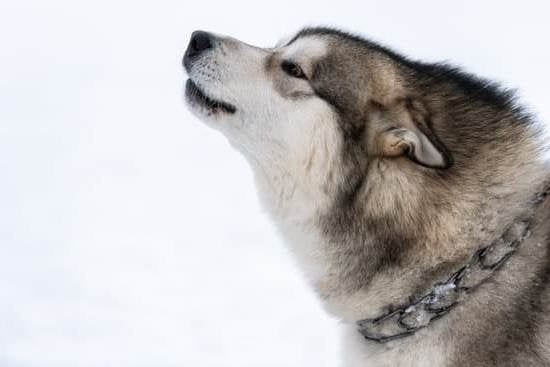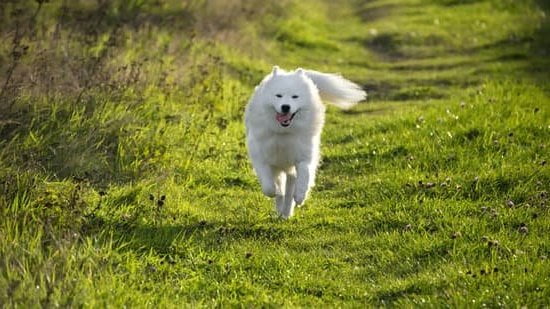Are you the proud owner of a four-legged companion but struggle with keeping them under control when off leash? In this article, we will provide you with valuable tips and techniques on how to train a dog off leash.
Off-leash training is not only convenient for dog owners, but it also allows dogs to enjoy freedom and independence while maintaining their safety. Understanding the importance of off-leash training is essential for creating a strong bond between you and your furry friend, as well as ensuring their safety in various environments.
Off-leash training requires more than just letting your dog roam freely. It involves building a strong foundation of basic obedience, teaching reliable recall, dealing with distractions, and implementing safety measures.
Preparing yourself with the necessary tools and equipment is also crucial in ensuring a successful off-leash training experience for your dog. By following the advice and guidance provided in this article, you can learn how to take your dog’s training to the next level and celebrate their successes in off-leash training.
In this section, we will explore the importance of off-leash training, laying the groundwork for the subsequent topics to delve into specific techniques and strategies. Whether you have a new puppy or an older dog that needs some extra training, mastering the art of off-leash training can be achievable by following these comprehensive guidelines. So let’s dive into understanding why off-leash training matters and how it can benefit both you and your canine companion.
Preparing for Off-Leash Training
Choosing the Right Collar and Harness
When preparing for off-leash training, it’s important to have the right collar and harness for your dog. For off-leash training, many trainers recommend a flat collar or a martingale collar that won’t put too much pressure on your dog’s neck. Additionally, a well-fitted harness can provide extra control and safety during off-leash sessions, especially for larger breeds or dogs prone to pulling.
Investing in a Long Line
A long line is an essential tool for gradually transitioning your dog from on-leash to off-leash training. This specialized leash allows you to maintain control over your dog while giving them more freedom and room to explore during training sessions. It’s important to choose a long line that is lightweight yet durable, and long enough to allow your dog to roam within a certain radius without feeling restricted.
Using Treats and Toys as Motivators
Positive reinforcement is key in off-leash training, and using treats and toys as motivators can help keep your dog engaged and focused. High-value treats such as small pieces of cooked chicken or cheese can be used to reward good behavior during off-leash sessions. Additionally, interactive toys such as balls or tug ropes can serve as rewards for coming when called, making the training experience enjoyable for your furry friend.
By having the necessary tools and equipment in place, you can set yourself up for success in training your dog to be obedient and responsive when off leash. These items not only contribute to effective training but also ensure the safety of both you and your canine companion during off-leash activities.
Building a Strong Foundation
Before you can begin off-leash training with your dog, it’s crucial to establish a solid foundation of basic obedience. This includes teaching your dog fundamental commands such as sit, stay, down, and heel. These commands will form the building blocks for off-leash training and ensure that your dog has a good understanding of what is expected of them.
To start with basic obedience training, it’s essential to use positive reinforcement techniques such as treats, praise, and rewards. This will motivate your dog to learn and obey commands willingly. Consistency is key when it comes to basic obedience training – practice these commands daily in short sessions to reinforce learning and build a strong foundation for off-leash training.
Once your dog has mastered these basic commands on leash, you can gradually start introducing off-leash obedience training in a controlled environment. Begin in an enclosed area such as a fenced yard or quiet park where there are minimal distractions. This will allow you to assess your dog’s response to off-leash commands and address any issues before progressing to more challenging environments.
As you continue with basic obedience training, remember that every dog learns at their own pace. Be patient and understanding, offering plenty of positive reinforcement along the way. With consistent practice and the right approach, you will set the stage for successful off-leash training experiences with your furry companion.
The Importance of Recall
Understanding the Importance of a Reliable Recall
Having a reliable recall is crucial for off-leash training as it ensures that your dog can be called back to you in any situation, even when distractions are present. This command not only provides safety for your dog by preventing them from running into dangerous situations, but it also allows them to enjoy more freedom and independence during off-leash activities.
Whether you’re hiking in the woods or playing in an open field, being able to call your dog back to you is essential for their overall well-being.
Basic Obedience Training as a Foundation
Before starting specific recall training, it’s important to have a solid foundation of basic obedience commands such as sit, stay, and come. These commands lay the groundwork for teaching your dog to come when called and ensure they understand and respond to your cues. Consistent practice with these basic commands will help establish a strong communication between you and your dog, making recall training more effective.
Recall Training Techniques
When teaching your dog to come when called, it’s important to start in a low-distraction environment such as your backyard. Begin by calling your dog’s name followed by the “come” command, using positive reinforcement such as treats or praise when they respond correctly.
Gradually increase the distance between you and your dog, adding more distractions over time as they become more proficient at responding to the recall command. It’s essential to make coming back to you a positive experience for your dog so that they are eager to respond whenever called upon.
By prioritizing recall training and practicing it regularly, you will build a strong foundation that will set the stage for successful off-leash adventures with your furry companion. Remember that patience, consistency, and positive reinforcement are key elements in teaching your dog how to train off leash effectively. With dedication and effort, you can cultivate a reliable recall in your dog and enjoy the freedom of letting them explore while still maintaining control over their behavior.
Gradual Progression
Once your dog has mastered basic obedience training and understands the importance of recall, it’s time to start transitioning from leash to off-leash training. This phase of training requires patience, consistency, and a deep understanding of your dog’s behavior and body language.
One important aspect of transitioning from leash to off-leash is to find a safe and secure area where you can practice without the risk of your dog running away. A fenced yard or an enclosed park can be suitable for this purpose. It’s essential to start in an environment with minimal distractions before gradually introducing more challenging settings.
During off-leash training, it’s crucial to keep reinforcing positive behaviors using treats, verbal praise, and physical affection. This will help your dog understand that staying close and following commands results in rewards. Additionally, always be prepared to go back to on-leash training if your dog starts displaying disobedient behavior.
As you progress with off-leash training, remember that every dog learns at their own pace. Some may take longer to adjust while others may quickly adapt. Stay patient and consistent in your approach, and soon enough, your dog will confidently respond even when off the leash.
| Aspect | Details |
|---|---|
| Safe Training Area | Fenced yard or enclosed park |
| Consistent Reinforcement | Treats, verbal praise, physical affection |
| Patient Approach | Every dog learns at their own pace |
Dealing With Distractions
When training a dog to be off leash, it is important to prepare for distractions that may cause your dog to lose focus. Here are some tips for dealing with distractions and training your dog to stay focused:
1. Start in a Controlled Environment: Begin by working on focus and attention in a controlled environment with minimal distractions. Use treats or toys to keep your dog’s attention on you, and gradually increase the level of distraction as your dog improves their focus.
2. Practice “Leave It” and “Watch Me” Commands: Teach your dog the “leave it” command to ignore distractions, and the “watch me” command to redirect their attention back to you. Use these commands consistently during off-leash training sessions, rewarding your dog for responding appropriately.
3. Gradually Introduce Distractions: Once your dog has mastered focusing in a controlled environment, start introducing distractions gradually. This could include other people, animals, or environmental stimuli such as sounds and smells. Keep the distractions at a level where your dog can still focus on you, and gradually increase the difficulty as they improve.
By incorporating these strategies into your off-leash training routine, you can help your dog learn to stay focused despite various distractions. Remember to be patient and consistent with your training, as building focus takes time and practice.
Remember that each dog is different, so be mindful of your pet’s individual learning style and adjust the training techniques accordingly.
Safety Measures
When it comes to off-leash training, safety should always be a top priority. Without the security of a leash, there are potential risks that owners need to consider. Here are some important precautions and tips for ensuring the safety of your dog during off-leash training:
- Choose the Right Location: When starting off-leash training, select a safe and secure area such as a fenced-in yard or an enclosed dog park. This will minimize the risk of your dog running off into dangerous situations.
- Use a Long Line: To give your dog some freedom while still maintaining control, consider using a long line during the early stages of off-leash training. This will allow you to gradually increase distance and practice recall while preventing your dog from wandering too far.
- Ensure Identification: Before engaging in off-leash training, make sure your dog is wearing proper identification such as a collar with tags or a microchip. In case your dog does happen to run off, this will increase the chances of a safe return.
In addition to these precautions, there are also important tips for ensuring a safe and successful off-leash training experience:
- Establish Trust: Building a strong bond with your dog based on trust and respect is essential for successful off-leash training. This can be achieved through positive reinforcement, consistency, and clear communication.
- Start in Low-Distraction Environments: When beginning off-leash training, choose environments with minimal distractions. As your dog becomes more reliable with commands and recall, gradually progress to more challenging settings.
- Practice Recall Regularly: Consistent practice of recall commands is crucial for maintaining control when your dog is off-leash. Use high-value rewards and create positive associations with coming when called to reinforce this behavior.
By implementing these safety measures and following these tips, you can ensure that your dog’s off-leash training is both safe and effective. Remember that every dog progresses at their own pace, so be patient and consistent in your training efforts.
Troubleshooting Common Challenges
One of the most common challenges in off-leash training is dealing with distractions. Dogs are easily drawn to various stimuli such as other animals, unfamiliar scents, or even loud noises. To overcome this obstacle, it is essential to gradually expose your dog to these distractions during training sessions.
Start with mild distractions and gradually increase the level as your dog becomes more proficient in obeying commands off-leash. This will help your dog learn to stay focused on you regardless of the surrounding distractions.
Another common challenge in off-leash training is getting your dog to consistently respond to commands, especially the crucial “come” command. To address this, it’s important to make the “come” command a positive and rewarding experience for your dog. Use high-value treats or toys and enthusiastically praise your dog when they respond correctly. Additionally, avoid using the “come” command in negative situations, as this can create a negative association and lead to inconsistent obedience.
Moreover, some dogs may exhibit behaviors such as wandering off or refusing to return when off-leash. This can be a challenge, especially for independent breeds. In these cases, it’s helpful to use long lines or training leads to slowly build up trust and reliability in your dog’s off-leash behavior.
Gradually lengthen the distance at which you allow your dog freedom while practicing recall exercises until they can be trusted in various environments. Remember that patience and consistency are key when overcoming these challenges in off-leash training.
Advanced Off-Leash Training Techniques
After mastering the basics of off-leash training, you may want to explore advanced techniques to further enhance your dog’s skills and obedience. These advanced techniques can help take your dog’s training to the next level and improve their overall behavior and responsiveness when off-leash.
One advanced technique is incorporating distance commands into your dog’s off-leash training. This means teaching your dog to respond to commands from a distance without the use of a leash.
Start by practicing with simple commands such as “sit” or “down” from a short distance, then gradually increase the distance as your dog becomes more proficient. This not only strengthens your dog’s obedience, but also reinforces their focus and attention on you even when they are not in close proximity.
Another advanced off-leash training technique is introducing distractions into your dog’s training sessions. Introducing distractions such as other dogs, people, or environmental stimuli can help teach your dog to remain focused on you and follow commands despite external factors. Begin with minimal distractions and gradually increase the level of difficulty as your dog becomes more adept at maintaining their focus and obedience. This will prepare them for real-life scenarios where distractions are inevitable.
Furthermore, practicing off-leash training in different environments can also be considered an advanced technique. Take your dog to new places such as parks, beaches, or hiking trails to practice their off-leash skills in various settings. This helps generalize their training so they can respond reliably in different environments and situations.
By incorporating these advanced off-leash training techniques into your dog’s training regimen, you can continue to strengthen their skills and behavior, ultimately enhancing their overall obedience and responsiveness when off-leash. Remember that consistency, patience, and positive reinforcement are key components in successfully implementing these advanced techniques for off-leash training.
Conclusion
In conclusion, off-leash training is a rewarding journey that strengthens the bond between you and your dog while allowing them the freedom to roam and explore safely. By following the necessary steps, from preparing for off-leash training with the right tools and equipment to building a solid foundation through basic obedience training, you can ensure a successful transition to off-leash freedom. Incorporating advanced techniques and troubleshooting common challenges will further enhance your dog’s off-leash skills.
One of the key components of off-leash training is teaching your dog to come when called, which is essential for their safety and your peace of mind. It is crucial to practice recall consistently in various environments and reinforce this behavior with positive reinforcement. Additionally, focusing on distractions and implementing safety measures will contribute to a well-rounded off-leash training experience for your dog.
As you celebrate your dog’s off-leash training success, remember that every step of the process requires patience, consistency, and dedication. Whether it’s overcoming common challenges or taking their training to the next level with advanced techniques, your commitment will ultimately pay off. With the right approach and mindset, you can successfully train your dog to be obedient and reliable even when off leash – providing both you and your furry companion with a sense of freedom and joy.
Frequently Asked Questions
How Do I Train My Dog to Stay Off the Leash?
Training your dog to stay off the leash requires patience and consistency. Start by teaching them basic commands like “sit” and “stay” on the leash, then gradually practice in a controlled, safe environment off the leash. Use positive reinforcement and rewards to encourage good behavior.
What Age Do You Start Off Leash Training?
Off leash training should ideally start when your dog is a puppy, as it’s easier to instill good habits early on. However, every dog is different, so it’s important to assess their readiness based on their behavior, obedience, and responsiveness to commands before starting off leash training.
How Do You Transition to Off Leash?
Transitioning to off leash involves gradually increasing your dog’s freedom while still maintaining control. Start by using a long line or training lead to allow them more space while still being able to guide and correct them if needed.
Practice in an enclosed area until you’re confident in their ability to listen and respond reliably before moving on to more open spaces.

Welcome to the blog! I am a professional dog trainer and have been working with dogs for many years. In this blog, I will be discussing various topics related to dog training, including tips, tricks, and advice. I hope you find this information helpful and informative. Thanks for reading!





